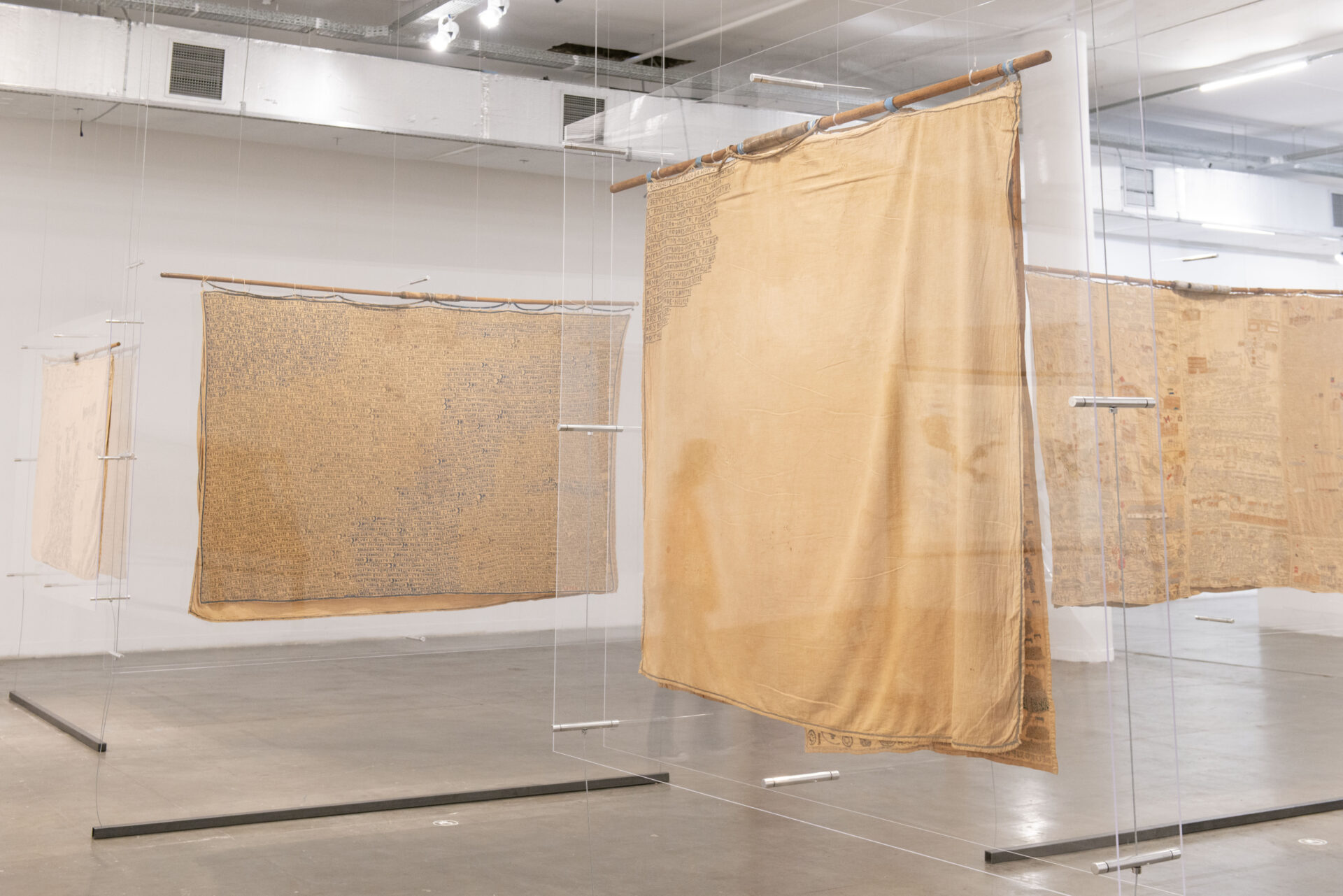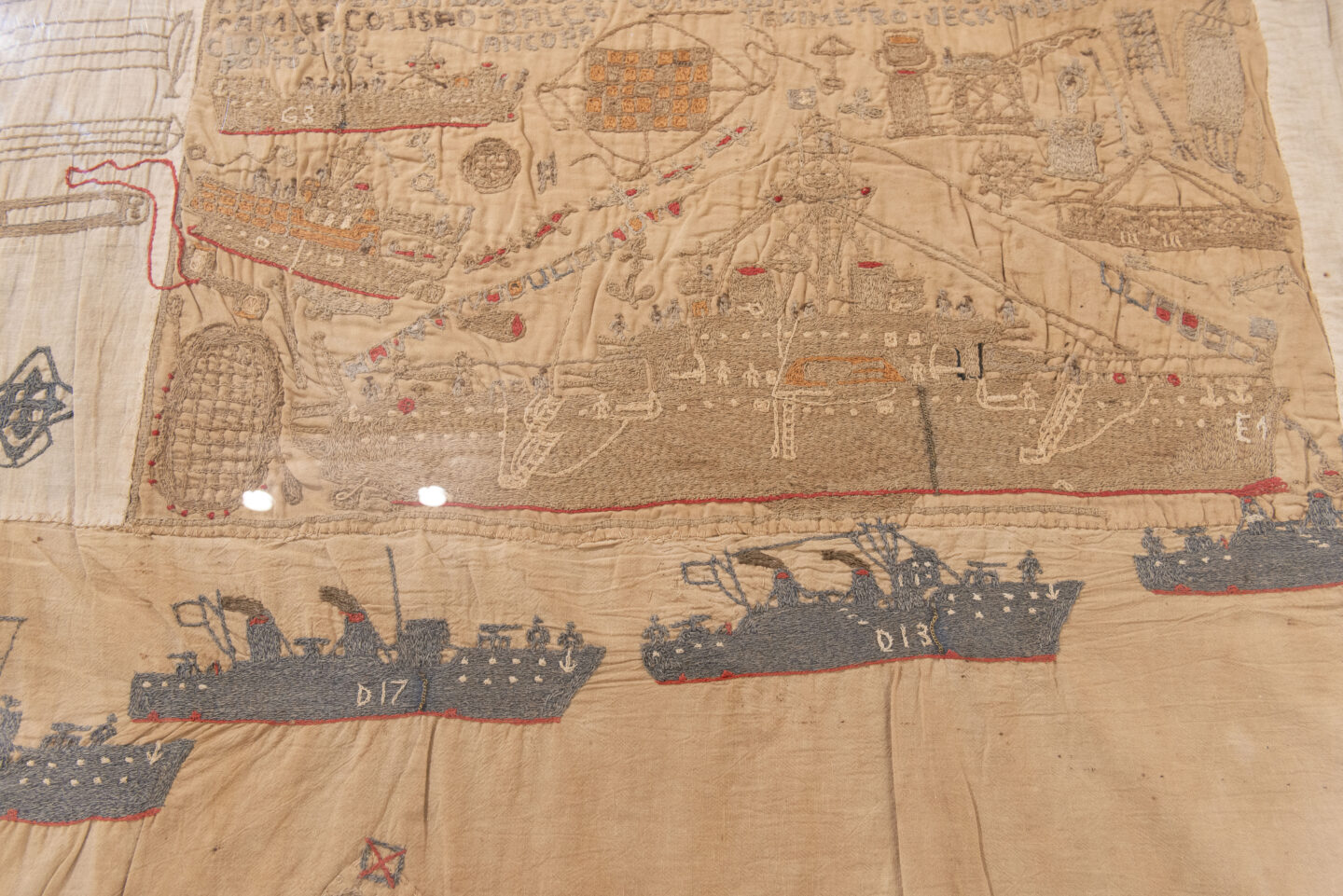
Arthur Bispo do Rosário
The gaze that wishes to un-decree the ugliness assigned to madness, to madness, needs to be everything but clinical. it is a gaze that needs to reach everything, while carefully un-hitting targets (usually dark ones). and which requires a gesture that does not need to cover everything, away from the colonial delirium of conquest, of cataloging, of categorizing, which cannot listen to the voice of self-determination.
To this day, madness has been treated as an ugly wound shelved in walls higher than museums’ white pillars. thus, some museums take upon themselves the task of breaking the interdiction imposed when madness is called ugliness, when it is condemned to hiddenness, thus assigning programed unintelligibilities to it.
Still I wonder with which cloak was Arthur Bispo do Rosário’s (1909 [or 1911]–-1989) body buried after his passing; I wonder if any of the cloaks he made escaped the fate or fury of that, in the name of “the discovery of beauty”, had them removed from the psychiatric cubicles where the sailor, the boxer, the lame, was detained for being considered mad before being labeled an artist – a title he refused –, there where he wove them.
I wonder if any of the cloaks fulfilled the black prophet’s dream of covering his body, and unveiling his soul, on his last judgment day? a day that ultimately has been being lived (or died) bit by bit, as each person (still) dies, even in present times, of massive black psychiatric incarceration.
This is a rhetorical, dramatical, question. and as we move in our flesh, free for now from the last judgment, through the expographed, museological, perfectly lit museum pieces, we walk a path over the silence of its nonanswer.
If there is beauty in the ugliness with which we over-look madness, when can we call it art? Maybe it matters to say that the embroiderer died far, far away, from the museum; locked inside huge walls, deep inside the asylum. that even before dying, pretty locked inside there, he was already being separated from his cloaks, his banners, every cloth and vitrine he embroidered, sewed, wove, for not being an artist nor an atheist.
Bispo do Rosário now is the name of a museum covered in the invisible artist cloak he did not wove.
tatiana nascimento
translated from Portuguese by bruna barros and jess oliveira
- Vista da obra Dicionário de nomes letra A I de Arthur Bispo do Rosário durante a 35ª Bienal de São Paulo – coreografias do impossível © Levi Fanan / Fundação Bienal de São Paulo
- Vista da obra Vós habitantes do planeta Terra, eu apresento as suas nações… de Arthur Bispo do Rosário durante a 35ª Bienal de São Paulo – coreografias do impossível © Levi Fanan / Fundação Bienal de São Paulo
- Vista da obra Recordações de Arthur Bispo do Rosário durante a 35ª Bienal de São Paulo – coreografias do impossível © Levi Fanan / Fundação Bienal de São Paulo
- Vista da obra Recordações de Arthur Bispo do Rosário durante a 35ª Bienal de São Paulo – coreografias do impossível © Levi Fanan / Fundação Bienal de São Paulo
- Vista da obra Navios de Guerra de Arthur Bispo do Rosário durante a 35ª Bienal de São Paulo – coreografias do impossível © Levi Fanan / Fundação Bienal de São Paulo
- Vista da obra Avenida Rosangela Maria de Arthur Bispo do Rosário durante a 35ª Bienal de São Paulo – coreografias do impossível © Levi Fanan / Fundação Bienal de São Paulo
Arthur Bispo do Rosário (Japaratuba, SE, Brazil, 1909 [1911] – Rio de Janeiro, Brazil, 1989) was recluded in a psychiatric institution for 50 years. During this time, he created artworks for which he believed to be under direct instruction of angels and they were intended to be shown to God on Judgement Day. Recognized as a cultural heritage by the Instituto do Patrimônio Histórico e Artístico Nacional [National Historic and Artistic Heritage Institute] (IPHAN) in 2018, his collection is intended as a world inventory. His works have been featured in exhibitions such as the Brasil + 500 mostra do redescobrimento and the 30th Bienal de São Paulo (Brazil), in addition the 55th Venice Biennale (Italy).

 Português
Português




